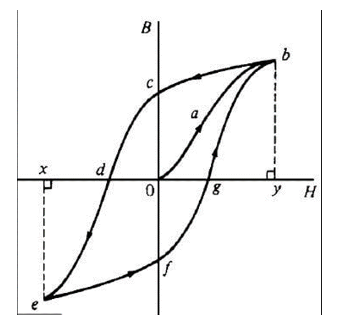All material in the universe has magnetic properties because all materials in the universe have electrons which are tiny little magnets. It depends on what that material is as to how to respond to the magnetic field. If an object is placed inside a magnetic field they are going to respond in one of three ways.
Ferromagnetic: If material is put inside a magnetic field the little electrons and the atoms and the domains will start to align to the electromagnetic field. It will make a magnet of its own with the North Pole and the South Pole. It will also make a permanent magnet. If we pull it out it is going to stay magnetised and that is because we have aligned these domains inside the object itself.
Paramagnetic: If you put a paramagnetic material inside a magnetic field with really strong magnets on either side, it will parallel those magnetic field lines, and you induce the small fields within the object itself.
If you pull it out, even though it is parallel, thermal motion is quickly going to scramble all those induced fields inside. If you put paramagnetic materials inside to release strong magnets, it will be attracted to both the north and the South Pole.
Diamagnetic: If you take diamagnetic material and put it inside a magnetic field, it will work in opposition. It still has these induced fields, but it will be in opposition to the magnetic fields.
If you take it out, the thermal motion is going to scramble all of those induced feels, and it will go back to being nonmagnetic.
Ferromagnetism and Curie’s temperature
The permanent magnets do not do this. They do it if you heat up a permanent magnet above what is called the Curie temperature all those magnetic fields get scrambled, and it is not a magnet anymore. This is a quantum property that is based on electrons.
Electrons have a spin and if you have a number of unpaired electrons they are not counteracted by the other spinning electron and so it is a tiny little magnet.
Ancient atoms are made of lots of electrons. Atoms are tiny magnets, and they will align themselves into domains that are bigger magnets up to about the size of a millimetre, then you can have the whole magnet be magnetised.
Even though it is a large property, it is actually a quantum property that is responsible for this magnetism.
B-H curve or hysteresis curve
The hysteresis curve represents the relation between magnetic induction B of magnetic material with magnetising intensity H.
H and B increase alignment of all magnetic moments-saturation magnetisation.
Not reversible H decreases, B decreases.
By changing the direction of the current, different effects will be obtained.

From the curve we observe the following point:
An Unmagnetised sample is placed in a solenoid and if the current passing through the solenoid is increased, then magnetic field B in the material rises, and it is saturated in the curve OA called saturation.
If H is decreased and reduced to zero, then at H=0, B ≠ 0 i.e., curve AB the value of B at H=0 is retentively.
Now the current in the solenoid is reversed a slowly increased than at C, B=0, and H 0, the value of H at B=0 is coercively.
When again current is slowly increased we again obtain saturation in the reverse direction at D i.e., Curve CD.
Now the current is reduced at curve DE then increased to curve EA. The cycle repeats itself, hence magnet magnetiser and demagnetiser. This phenomenon is called hysteresis.
Note
For electromagnet the retention is low and coercivity is also low.
For permanent magnet the retention is high and coercivity is also high.
Lesser the area under B-H curve less will be losses and vice versa.
Application of Ferromagnetic substances
Permanent magnets
Materials should possess high value both retentively and coercively.
Soft iron has high retention but small coercivity, soft iron is not suitable for making permanent magnets.
Steal possesses a fairly large value of coercivity and large value of retentively.
Electromagnets
Magnets which can be turned on and off by switching the current on and off.
Materials should possess high retention and low coercivity.
Material has to go under magnetisation and demagnetisation repetitively.
Area of hysteresis loop-small.
Soft iron used.
Transformer cores
Large cycles of magnetisation and demagnetisation every second.
Material chosen for the narrow hysteresis loop is soft iron.
Conclusion
All material in the universe has magnetic properties because all materials in the universe have electrons, which are tiny little magnets. Each individual atom/molecule’s magnetic field or magnetic dipole moment is very strong because when these molecules/atoms interact with other atoms/molecules around them, then they try to arrange other atoms/molecule’s magnetic dipole moment in the same direction as theirs. Because of this, it forms small groups of atoms/molecules in ferromagnetic materials, which are called domains. Each domain is a strong magnet without any external magnetic field, but still these ferromagnetic materials do not act as a magnet.
 Profile
Profile Settings
Settings Refer your friends
Refer your friends Sign out
Sign out






